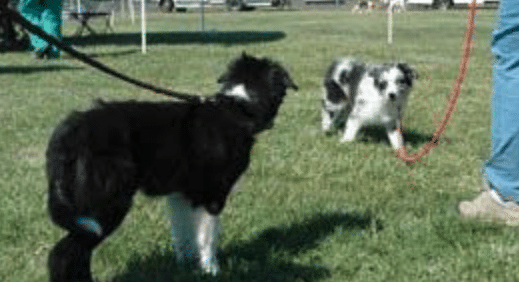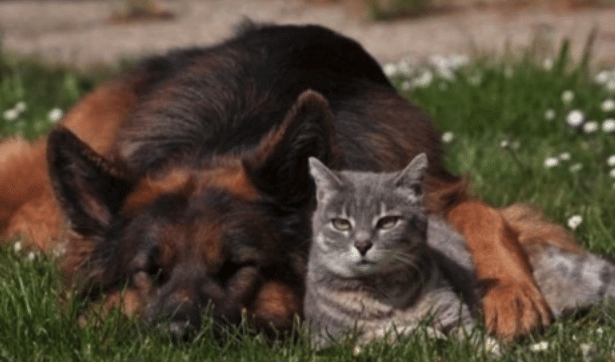What You Need for Pick-up
The day has finally arrived to bring your dog or puppy home. You already have your crate or harness in your vehicle to secure your new family member. There are a few other items to remember that are necessary to keep your new pup safe for the journey home and every time he ventures outside. We highly recommend putting a harness on your new dog or pup indoors before bringing him out to your vehicle to avoid the potential to slip out of his collar. Many escapes have occurred with frightened or nervous dogs backing out of their collars, some with deadly consequences.
Your new dog must have a collar with an I.D. tag placed on it. The I.D. tag should have your dog’s name, your address, and at least one phone number to contact you should he get lost. If you are picking up a small puppy, sometimes harnesses work better to attach the leash to. You should still have a collar and an I.D. tag, but bring a harness along for the ride in case your puppy needs to stop and go potty on the drive home. Finally, you need an undamaged leash to attach to your pet. Your pet should be leashed prior to opening any car doors and you should have a firm grip on the leash.
If your dog has not yet been microchipped, talk with your veterinarian about getting him microchipped.
Introductions to Another Dog

Proper leash greeting: while the Aussie appears nervous the loose leash allows him to approach on his own accord. Courtesy: Whole Dog Journal
It’s always best to have a plan when introducing a new dog to your household. This could be your new dog or puppy you are introducing to the family, a friend or family coming to visit for the weekend, or a dinner guest bringing their dog along.
You may know that your dog is very social, but you may not know about the new dog being introduced to the mix, or how your dog may react to a new dog actually being introduced to his space, especially if they are not spayed/neutered. It is best to conduct introductions on neutral territory or during a walk. It you have two individuals, one person can walk one dog at a park and the other can walk the other. Start about 10 feet apart and gradually decrease your distance if the dogs are doing well, maintaining space between them. Let the dogs smell where the other has walked. Watch the body language as the dogs get closer to make sure there is not posturing or raised hackles (raised hair on their backs). If so, increase your distance again. If this occurs, take a take a short break and let the dogs relax and try again. If the dogs continue to have the same reaction to one another, contact a trainer or animal behaviorist for assistance.
If the dogs give a play bow or pawing, allow them to sniff and praise them for proper behavior. Continue on your walk, occasionally allowing them to sniff. If the dogs continue to seem fine, allow them to sniff one another on loose leashes. Let them initiate their approach and watch for any raised hackles or tense posturing. Any of these signs, begin your walk again. If all goes well, you can take them home. However, make sure the dog toys and food bowls have been put away. These items can trigger possessiveness and lead to a fight.
If you are introducing a puppy less than four months of age to an adult dog, you can follow the same procedure. However, you should be aware of where you are walking them if your puppy hasn’t had all of his vaccinations. Additionally, a puppy and an adult dog will need frequent breaks from one another, as an adult dog may become irritated with the antics of a young puppy.
As new dog relationships are developing, the dogs should NEVER be left alone. If you ever have concerns about your dogs and their behavior, always consult a trainer or dog behaviorist.
Introductions to a Cat

Dogs and cats live happily together in many households. The first introduction is very important and as with introducing two dogs, it is easier with two individuals in order to be able to help control both animals.
The first step is to keep your dog on a leash and let both animals see one another while each of you watch to see their body language. If the cat isn’t acting aggressively, he should be allowed to roam freely. If the dog isn’t acting aggressively, have him practice some basic commands, i.e. sit, down and stay, while the cat moves around. Praise your dog if he ignores the cat.
If your dog is reacting aggressively or having strong prey dive he will be overly focused on the cat. He will stare, whine, cry and stiffen. If he exhibits any of these signs do not let him near the cat. Separate the dog and cat using a tall baby gate, place all of the cats needs in one room, i.e. litter box, food, and water and secure him. They do make baby gates with a door for him to be able to exit at the bottom through a pass through. This may be an option for those who crate their dogs at night and are able to coral their cats in the morning back into the room.
The idea is that the dog will lose interest in a few days; however, until you are certain that your dog will not go after your cat you need to keep them separated.
Exploring Your Home
Once you arrive at your home, your new dog will need some time to explore your home. If you have another dog that you have already done the introductions with, allow him to enter your home first and wander the home. Your new dog or puppy should be kept on a leash, but lead him from room to room allowing him to explore and take in the different scents. If you are introducing a puppy or un-neutered male, be watchful for signs that he may need to go out to potty. Males may stop and mark their territory over another male’s scent. If this occurs, you will want to clean the spot with a good enzymatic clean such as Nature’s Miracle. This will thoroughly clean the stain and remove the scent to help prevent him from re marking in the same spot again.
If you have more than one dog, you should not leave them unattended during the first two weeks while their relationship is forming. If you cannot be home, both dogs should be crated or kept in separate rooms. You should feed the dogs separately so that neither dog is competing for food. As mentioned earlier, feeding your dog in a crate is a great way to get him used to it and will allow your other dog to remain undisturbed. Be watchful of other situations that may excite the dogs and cause a disturbance: toys, visitors, ringing doorbells, returning from walks, and family members returning home. These are all new occurrences to your new dog. Give him a chance to settle in and adjust slowly. If your new dog is a puppy, he will need frequent naps as he is growing. The best place for him to nap is in his crate. Your dog will sleep soundly and once he awakes he will be rested and ready to play again!
House Training
There are various techniques that people use to house train their dogs and puppies. Some people prefer to use potty pads in the corner of a bathroom or laundry room, others prefer a litter box and others prefer to take their dog or puppy directly outside. Whichever method you decide to use you need to stick with it. If you choose the inside method, you will gradually need to move those potty pads and litter boxes closer to the outside door and then out to a spot in the yard where you want your dog to go potty.
The first step in house training is establishing a predictable routine. You should be feeding your dog on the same daily schedule. You should also be taking your puppy out to potty at regular intervals. He should go out as soon as he wakes up in the morning, following each meal, when he wakes up from each nap, prior to bedtime and throughout the day at 30-60 minute intervals. If you are house training an adult dog, you can stretch the intervals throughout the day to longer periods. However, you want to be sure to give your new dog the chance to succeed.
In the home, the dog should be confined to a small space or a crate if he is not supervised. Your dog can have a larger run of the home if he has just gone potty and is being watched. When you take him out to potty, take him out on a leash to one spot to eliminate. His scent will help him get the urge to go. Select a word or phrase that you will use to encourage your dog to go potty, such as “do your business” or “go potty.” Once he goes, praise him enthusiastically and reward him with a short walk or play session. If your dog doesn’t go within 5-10 minutes take him inside and return him to the crate. After 5-10 minutes take him back outside. Your dog doesn’t get to play or get rewarded until he goes potty. Remember to keep the potty area cleaned up. Although you are having your dog go in one area, it should not be “messy.”
During house training there will be setbacks. Do NOT punish your dog. He is learning and if he is a puppy his bladder and bowel control is still developing. If you catch your dog in the act, stop him and gently take him to the correct spot. If you find an accident after the fact, do not punish him as that could cause him to fear you and not to eliminate in your presence. Clean up the mess with an enzymatic cleaner to eliminate any lasting odors to avoid future accidents in that spot. Finally, a dog that is house trained and begins having accidents should be seen by your veterinarian, as there may be an underlying medical reason.
